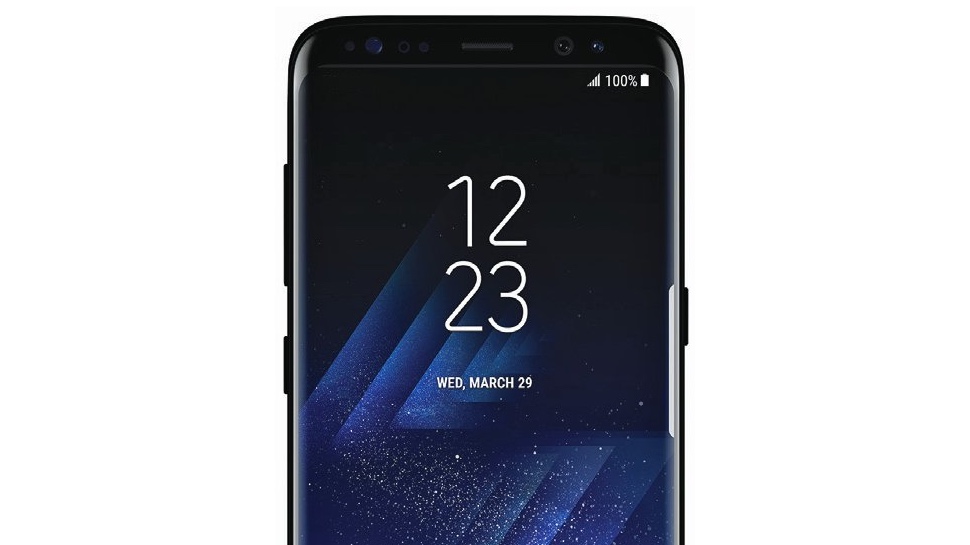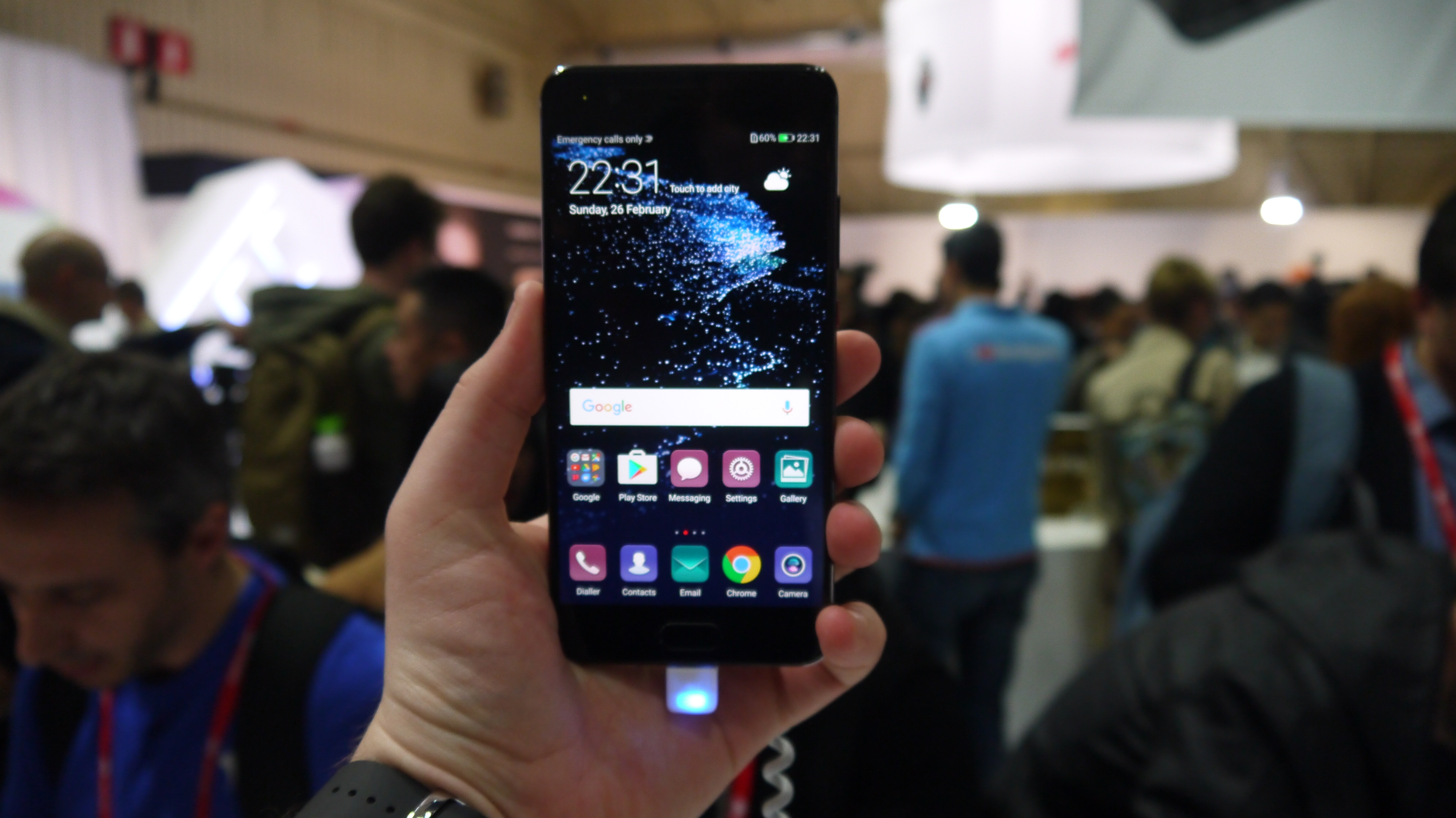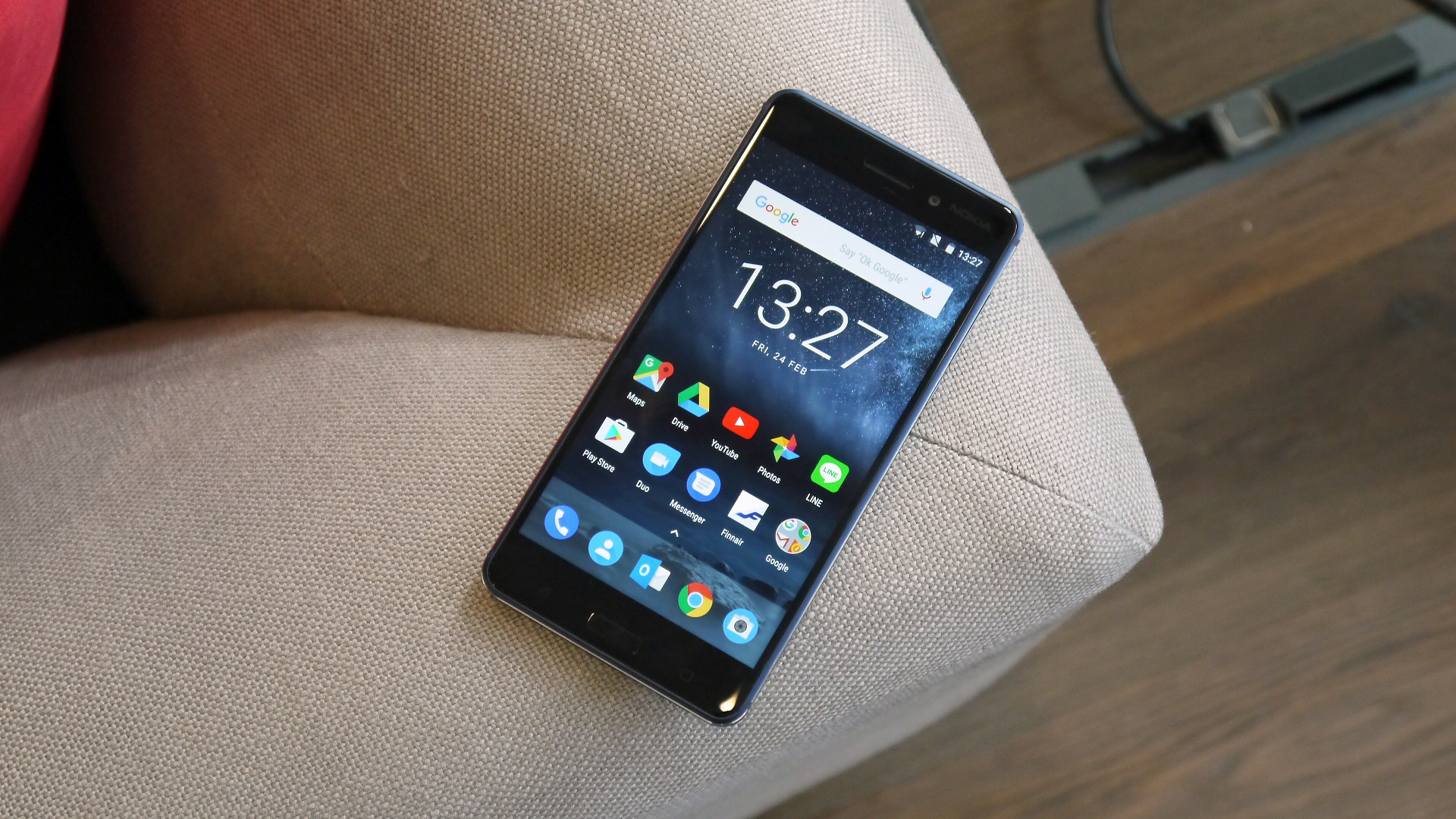UPDATE: Sony's Xperia XZ Premium, with its truly glorious 4K display, has made it onto our list of the 10 best Android phones in Australia! Read on to find out why it made the cut!
Apple may have kickstarted the smartphone revolution when it launched its very first iPhone back in 2007, but it was Google's Android operating system that truly took it mainstream.
With an open platform and multiple manufacturers using the operating system, Android was always destined for greatness. Today, Android is easily the biggest mobile OS in Australia.
With only a couple of exceptions, all the companies that were making mobile phones before iOS was launched now run Android.
Samsung, Sony, LG, HTC and Motorola all wave the Android flag proudly on their devices.
Google itself now has its own branded flagship phones in the Google Pixel and its big brother, Google Pixel XL.
Still, the many variations in screen size, processing power, software features and design makes finding the best Android phone for you extremely tough.
To help find the best Android phone for you, we've rounded up the best Android handsets out there today, rating the phones on hardware performance, OS upgrade potential and, of course, how shiny and nice they are to have and boast about to work colleagues.
So here they are - the best Android phones money can buy in 2017 – for many, many different reasons.
The Moto Z is modular like the LG G5, but it's far better with extra add-ons and a much easier to use snap-on design.
It's powerful and the modular design means you'll be able to switch out elements for future accessories, like mini projectors and audio boosters, and could mean you can keep this phone for much longer than other devices that will date faster.
Usually when we talk about mid-cycle upgrades, we're strictly talking about new software. Moto Z could take on new form at any time.
It may be the world's thinnest phone, but that comes at a cost with a reduction in battery size and the loss of the headphone jack – potential issues for some users. If you can overlook these shortcomings though you'll have a truly innovative device in your hands.
Read the full review: Motorola Moto Z
Sony's Xperia Z5 Premium was the first smartphone in the world to boast a 4K display. Now, the electronics giant has followed it with another magnificent phone in the Sony Xperia XZ Premium.
As you would expect, its 5.46-inch UHD display is truly stunning, now also boasting HDR's wider colour gamut for truly breathtaking clarity and vibrant images all round.
Screen aside, the phone itself is quite impressive in terms of specs, with 4GB of RAM, a Snapdragon 835 processor, 64 GB of storage (microSD up to 256GB), a 3,230 mAh battery, a water resistant build and it's also got Sony's unique side-mounted fingerprint scanner.
Though other handsets may have the edge when it comes to raw power, the XZ premium's incredible 4K screen (which boasts a whopping pixel density of 807ppi) is especially magnificent when used in conjunction with XZ Premium's impressive 19MP primary camera. It's got a dedicated shutter button (which you can half-press to initiate laser autofocus) and is also capable of shooting 720p video footage at a ridiculously slow 960fps, allowing you to record your own Guy Ritchie-style madness. Of course, you can also record 4K footage at 30fps, too.
If there's one drawback to Sony Xperia XZ Premium, it's that its unnecessarily huge bezels distract from the amazing screen in front of you. Sony doesn't even make the best of the space either, opting to use on-screen buttons instead of touch capacitive ones at the bottom, and the fingerprint scanner isn't there, either.
Still, the Sony Xperia XZ is a seriously slick phone with a jaw-dropping screen (backed by the same Triluminos display technology that powers Sony's 4K TVs). We recommend loading some 4K HDR footage from YouTube on there and watching your friends get extremely jealous of what this phone is capable of.
Read the full review: Sony Xperia XZ Premium
See the best Sony Xperia XZ Premium telco deals
While last year's Huawei Mate 9 was already an incredibly impressive phablet, the Huawei P10 Plus takes everything that phone did well and improves upon it, making it an ideal option for those who don't like larger-sized handsets.
Like the Mate 9, it has dual cameras (only this time with no camera bumps whatsoever) and photography is rightly the key selling point of the device. At 20MP and 12MP, these lenses combine monochrome and RGB sensors with a creative Wide Aperture mode that makes it relatively easy to achieve pro-level results.
Trust us when we tell you that you will never tire of applying bokeh effects and changing your picture's point of focus long after it's already been taken. And, if you want to get even deeper with your photography options, a pro mode lets you adjust ISO levels, white balance and more.
It's got a speedy fingerprint sensor on the front (one of the fastest we've ever tested), a gorgeous QHD display, a textured power button with red edging for added pizzazz, a large battery with fast-charging capability, and thanks to the Kirin 960 processor it inherited from the Mate 9, it performs just as terrifically.
It too uses a machine learning algorithm that learns how you use the phone, effectively creating shortcuts to your most-used features. This makes sure that your handset does not show signs of slowed performance for at least the first 18 months of usage.
While it may not have the name recognition of a Samsung Galaxy S8 or LG G6, it's hard to imagine anyone spending some time for Huawei's flagship and coming away wanting. If you're looking for a phone that takes amazing photos, you're unlikely to find a better option than the Huawei P10 Plus.
Read the full review: Huawei P10 Plus
Get the best deal on the Huawei P10 Plus
The Google Pixel XL offers up a pure Android experience on a bigger, higher resolution display than its brother, the Pixel.
The clean, slick interface is a joy to use, while the 12MP snapper round the back delivers some quality shots.
A fingerprint scanner not only keeps the Pixel XL secure, it also uses gestures to give you easier access to the notification bar - saving you from over-stretching your thumb to the top of the screen.
The price is on the steep side, but this is a premium flagship device and while we'd like the battery to be a bit better the XL is still an excellent smartphone.
Read our full review: Google Pixel XL
See the best Google Pixel XL telco plans
HTC takes fifth place on our best Android phone list with the gorgeous HTC 10. If you're after a phone that will provide you with an incredible audio experience, the HTC 10 is tough to beat.
The HTC 10 has a new design with but if you're a fan of the HTC look don't worry, it shares a lot of its design language with past HTC handsets.
It has a 5.2-inch 2K display, which makes watching video gorgeous, as well as some strong spec under-the-hood including 4GB of RAM and a Qualcomm Snapdragon 820 chipset.
The camera technology is a big focus for HTC though. A 12MP sensor may not sound like much, but it makes some gorgeous images on the back and there's a 5MP front-facing camera to capture your selfies too.
Read the full review: HTC 10
See the best HTC 10 telco deals
A vast improvement over the Mate 8, Huawei's latest flagship is the Chinese company's most impressive to date.
Huawei's Mate 9 is a prestige phablet that's equal parts Samsung Galaxy Note 7 (minus the fire) and iPhone 7 Plus, mixed in with the brand's own increasingly-stylish design sensibilities both inside and out. Simply put, everything about the Mate 9 screams sophistication.
With its new EMUI 5.0 OS (based on Android Nougat), the Mate 9 has successfully bridged the gap between iOS and Android, letting users place their apps in an App Drawer or spread all of them across numerous home screen pages, iPhone-style.
Like the Huawei P9, the Mate 9's camera is Leica-branded, and with a bit of tinkering, users can produce photos with professional-looking depth of field effects and incredible detail. We also like the many functions the Mate 9 camera app provides, including a proper monochrome mode with dedicated sensor, as well as modes for document scanning and night shooting.
Performance is impressive, too – Huawei has included its own Machine Learning Algorithm in the Mate 9, which is designed to ensure your phone gets faster over time, and that's backed up by 4GB of RAM and the aforementioned Huawei-made Kirin 960 chipset.
Though it lacks a QHD display like its upper tier rivals, the Mate 9's Full HD screen looks crisp, vibrant and incredibly bright. That said, for those who are after a Daydream View-ready handset, you may be better off with the next phone on our list...
Read the full review: Huawei Mate 9
See the best Huawei Mate 9 telco plans
If you're looking for the ultimate Android experience without any over-complicated features the Google Pixel is the phone for you.
It takes the latest version of Google's software - Android 7.1 Nougat - in its natural form. There's no annoying third-party manufacturer overlay, it's Android as Google intended.
Add to that its premium design (although the glass patch on the rear is a little questionable), excellent camera and huge amount of power under the hood and you've got yourself a rather special smartphone.
The battery life is the weak point for the Pixel, and we'd recommend carrying a charger with you if you're out all day.
Read our full review: Google Pixel
See the best Google Pixel telco plans
After a couple of wild attempts at shaking up the smartphone game, including last year's modular LG G5 handset, LG has built a more traditional phone with the LG G6, one that takes multiple elements from the top handsets around, blended together to assemble a terrific all-rounder of a handset.
The G6 is a much more conservative design than its predecessor, taking the form of a sealed unit that drops the removable battery of the previous LG flagships, replacing it with a larger-capacity power pack and waterproof shell, which we think is a pretty good trade-off.
While it lacks somewhat in innovation, it makes up for with its impressive Dolby Vision and HDR 10 supporting 18:9 display. This, along with reduced bezels, gives the user more screen real estate to play with, and also introduces some clever little changes to the user interface to exploit the extra pixels, especially when it comes to multi-tasking and photo taking capabilities.
The LG G6 camera is upgraded in a way, but also remains very similar to last year's in others. The same normal and wide-angle camera lenses are back, but they're now both 13MP.
Sure, the LG G6 is a phone that takes things back to basics, but that's what makes it such a great phone for the everyday user. its sleek metal and glass design is attractive, and to anyone using the iPhone 7 Plus, the ratio of screen to body will be eye-opening to say the least. Here's a phone that doesn't need to be phablet-sized to deliver a big viewing experience.
Read the hands on review: LG G6
See the best LG G6 telco plans
Samsung has once again taken the two top spots of the best Android phone in the world right now.
Samsung's latest Galaxy S8 is in the second place position of this list thanks to an incredible design, amazing display and some truly great power packed into the phone.
Everything that has made Samsung phones great over the last few years has been packed into this 5.8-inch device - that's almost bezeless too - and comes with top of the range hardware and some easy to use Android software.
There's a new iris scanner to allow you to unlock the phone with just your eyes and Samsung has also included a new voice assistant called Bixby (though it's not entirely ready yet). It's not the perfect device some had hoped for, but it's the best non-phablet Android phone you can buy at the moment.
Read the full review: Samsung Galaxy S8
See the best Samsung Galaxy S8 telco plans
First place goes to the Samsung Galaxy S8 Plus. The Galaxy S8 is fantastic, but we prefer devices on the larger side of the flagship pairing.
The size of the Galaxy S8 Plus may put some people off at 6.2-inches, but we found the device easy to use and we don't even mind its higher price.
Everything we love about the Galaxy S8 is available here as Samsung has decided to only really changed the sizes of the screens rather than fiddling with the spec inside the device.
That same powerful 12MP camera and top of the range power setup is here to do everything you want it to as well as the new biometric tech that may allow you to unlock your phone faster than ever before.
Read the full review: Samsung Galaxy S8 Plus
See the best Samsung Galaxy S8 Plus telco plans
As always, the next generation of innovative smart phones is just around the corner. So if you're the kind of person that will not settle for anything other than the latest, most cutting edge handset on the market, you may want to hold your horses and wait for one of these phones to launch in Australia.
Samsung Galaxy S8

Huawei P10 and P10 Plus

Huawei turned a lot of heads with its Leica-camera sporting P9 handset last year, and it's set to turn a few more with its follow up phones, the P10 and the larger P10 Plus.
Much of the design on the Huawei P10 has come directly from last year’s phone, though this time, you'll find a QHD screen on the P10 Plus, and the rear-mounted fingerprint sensor from the P10 has been moved over to the front. We'll let you know more about each handset closer to its expected Australian release in May/June 2017.
Nokia 6

Nokia has returned! The once-iconic smartphone brand is back in business thanks to Finnish startup HMD signing a 10-year license deal to stick the Nokia name on smartphones and tablets, and the Nokia 6 is the top dog in its initial lineup of four devices.
We know that Nokia's big comeback phones will run on Android, with the Nokia 6 boasting a 5.5-inch Full HD display, Snapdragon 430 chipset, 3GB of RAM, 32GB of internal storage, 16MP rear camera, 8MP front camera, fingerprint scanner and a 3,000mAh battery. It promises to deliver a premium experience at an affordable price. Though we don't have a release date yet, it's expected to launch in Q2 2017. Will the Nokia 6 make it onto our list of best Android phones in Australia? Stranger things have happened...
from TechRadar: Phone and communications news http://www.techradar.com/news/phone-and-communications/mobile-phones/best-android-phone-which-should-you-buy-1181607
No comments:
Post a Comment